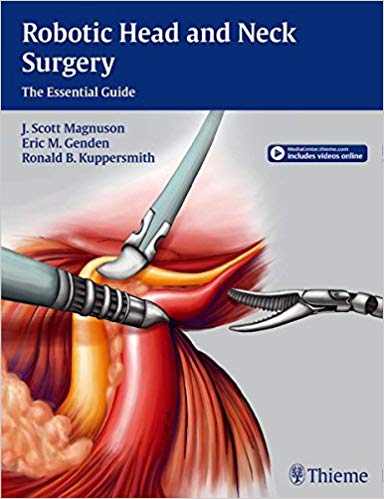
It is my opinion that, in the near future, all major centres will have access to their own robot and that there will be an increasing role for this technology, especially in head and neck surgery. This book provides an excellent and timely introduction to this field. — The Journal of Laryngology & Otology
This is an exceptional resource on the latest techniques in robotic surgery, one of the most rapidly changing fields in head and neck surgery. The book focuses on the practical application of robotic surgical techniques to all types of head and neck locations. It is the first to meet the need for additional resources in this innovative area. — Doody’s Review (starred review)
Head and neck surgery for benign and malignant disease is undergoing a groundbreaking transformation. Robot-assisted surgery is quickly being recognized as a significant innovation, demonstrating the potential to change treatment paradigms for head and neck disease. State-of-the-art robotics enables surgeons to access complex anatomy using a more minimally invasive approach, with the potential to improve patient outcome and reduce surgical morbidity.
Learn from international clinicians who have pioneered new paths in the application of robotic-assisted surgery. Throughout the 16 chapters of this book, the authors provide comprehensive discussion of robotic surgical procedures for diseases affecting the oropharynx, larynx, hypopharynx, parapharyngeal space, thyroid, neck, and skull base.
Key Features:
- Fundamental training and education-from ethical considerations and room set-up-to avoiding complications and clinical pearls
- Ten videos on the treatment of squamous and spindle cell carcinomas
- 150 superb illustrations enhance the didactic text
Although further innovations and refinement of this technology will be forthcoming, the current state of robotic surgery encompassed in these pages lays a foundation for today and inspiration for tomorrow’s advancements. The book is an invaluable resource for surgeons and residents interested in learning about and incorporating surgical robotics into otolaryngology practice, and will also benefit medical and radiation oncologists.

